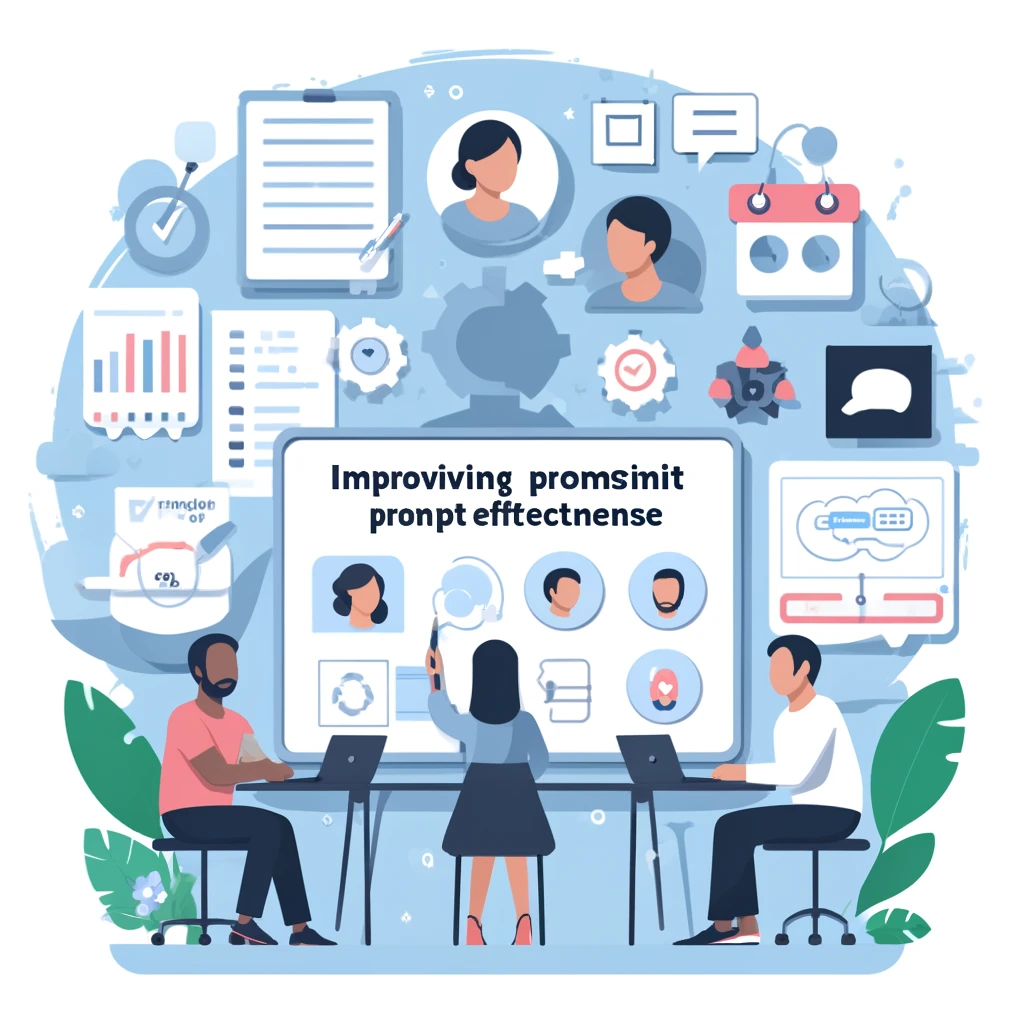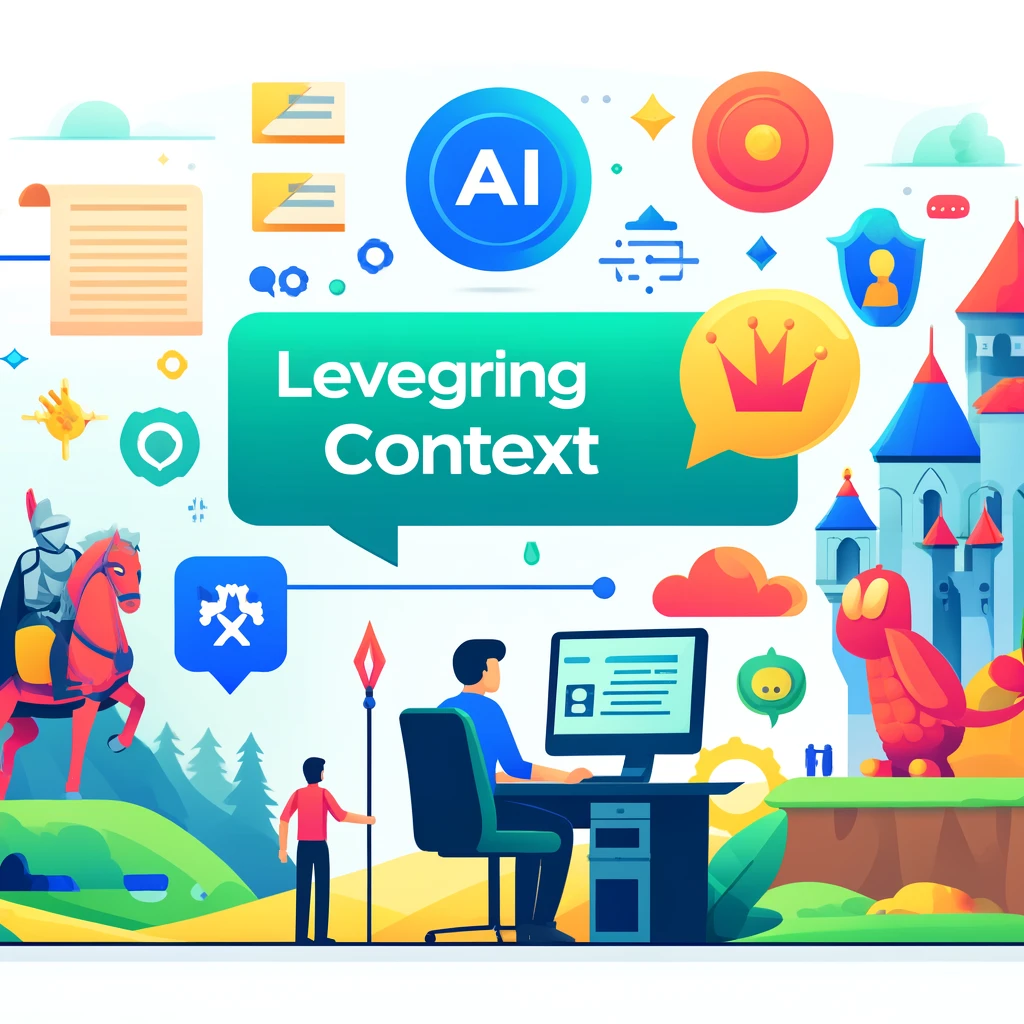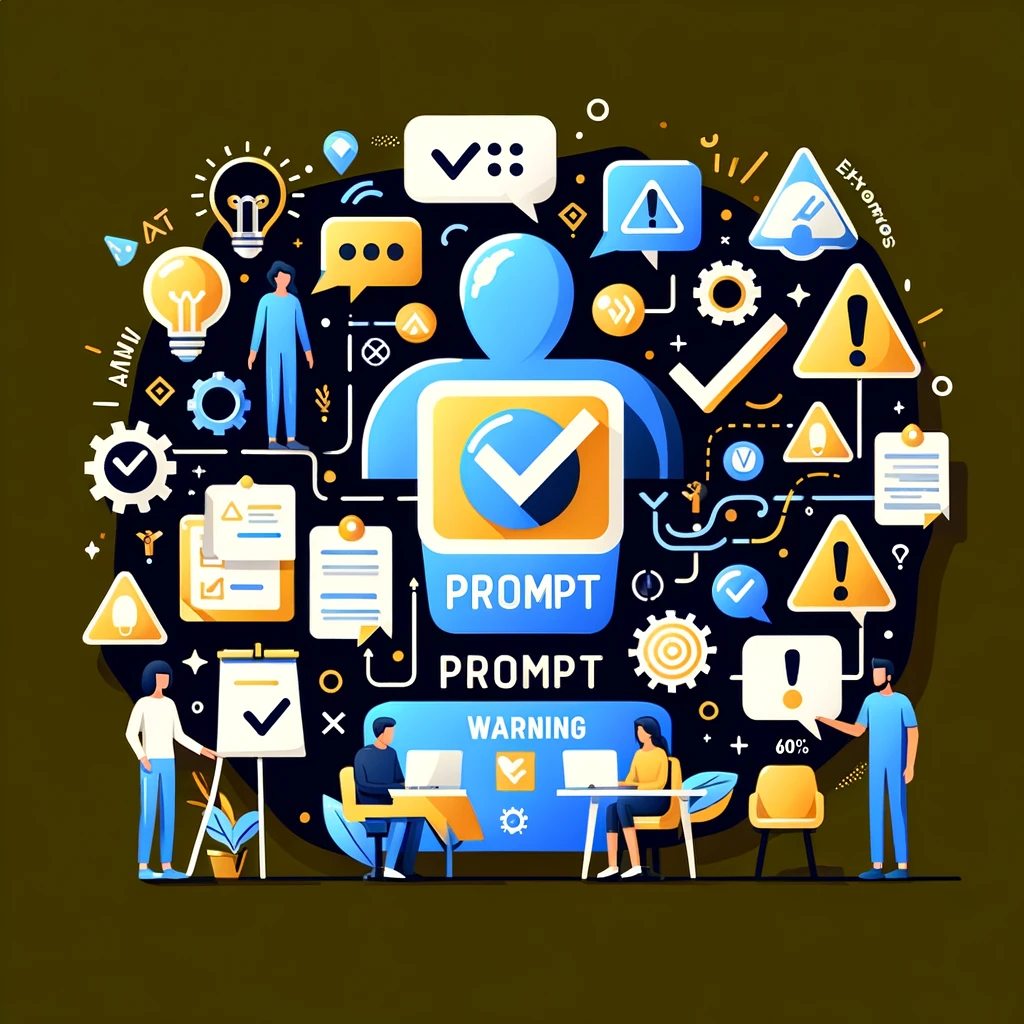
Techniques for Improving Prompt Effectiveness
Finally, let’s explore techniques for improving prompt effectiveness. These tips and tricks will help you get the most out of your AI interactions.
Introduction
Enhancing prompt effectiveness involves fine-tuning your approach and applying advanced techniques. Let’s dive into some practical strategies.
Techniques for Improving Effectiveness
Here are some techniques to enhance the effectiveness of your prompts:
- Use Clear and Specific Language:
The clearer and more specific your language, the better the AI can understand your request. Specific language reduces ambiguity and ensures that the AI grasps the exact nature of the task.
How to Implement:
- Avoid Ambiguity: Ensure that each term and instruction in your prompt has a single, clear meaning. Avoid using vague terms or phrases that can be interpreted in multiple ways.
- Be Direct: Clearly state what you want the AI to do. Direct instructions help the AI understand your exact requirements.
Example:
Vague: "Tell me about history." Clear and Specific: "Provide a brief summary of the key events in World War II." - Provide Examples:
Giving examples can help guide the AI’s response. Examples illustrate the desired outcome and provide a clear reference point for the AI to follow.
How to Implement:
- Include Clear Examples: Add examples that demonstrate the desired response. Ensure they are specific and relevant to the task.
- Explain the Example: Briefly explain why the example is a good response. This helps the AI understand the reasoning behind the example.
- Compare Examples: Provide both good and bad examples to highlight what to do and what to avoid.
Example:
Prompt: "Write a short story about a hero." Example: "A knight saves a village from a dragon." - Leverage Feedback:
Use the AI’s responses to refine and improve your prompts continuously. Analyze the outputs and make adjustments as needed to enhance clarity and relevance.
How to Implement:
- Review AI Responses: Regularly review the AI’s responses to identify patterns and areas for improvement.
- Adjust Prompts: Modify your prompts based on the AI’s responses to improve clarity and relevance.
- Iterative Testing: Continuously test and refine your prompts based on feedback.
Example:
Initial Prompt: "Describe renewable energy." AI Response: "Renewable energy comes from natural sources that are constantly replenished." Refined Prompt: "List the different types of renewable energy sources and provide a brief description of each." - Iterative Refinement:
Continuously test and refine your prompts based on the AI’s feedback. Iterative refinement helps in fine-tuning the prompts to achieve optimal responses.
How to Implement:
- Test Prompts Regularly: Use your prompts with the AI and evaluate the responses.
- Identify Issues: Note any parts of the response that are unclear, off-topic, or incorrect.
- Refine Prompts: Adjust the prompts to address the identified issues.
- Retest: Use the refined prompts with the AI and compare the new responses to the initial ones.
Example:
Initial Prompt: "Explain gravity." AI Response: "Gravity is a force that attracts two bodies towards each other." Refined Prompt: "Explain the concept of gravity, including its effects on objects on Earth and in space." - Contextual Information:
Provide sufficient background information to help the AI understand the context of the prompt. Contextual information guides the AI to generate more relevant and accurate responses.
How to Implement:
- Include Necessary Details: Provide any relevant background information that the AI needs to understand the request fully.
- Set the Scene: Describe the circumstances or setting that the AI should consider when generating the response.
Example:
Initial Prompt: "Describe a historical event." Contextual Prompt: "Describe the events leading up to the fall of the Berlin Wall and its impact on Germany." - Break Down Complex Tasks:
Divide complex tasks into smaller, manageable parts. This approach helps the AI focus on one aspect at a time, improving the overall quality of the response.
How to Implement:
- Identify Task Components: Break the task into its component parts and create separate prompts for each part.
- Sequence Prompts Logically: Arrange the prompts in a logical sequence to guide the AI through the task step-by-step.
Example:
Complex Prompt: "Explain photosynthesis and its importance, then describe how plants adapt to different environments." Broken Down Prompts: 1. "Explain the process of photosynthesis in plants." 2. "Describe the importance of photosynthesis for plant growth." 3. "Explain how plants adapt to different environments." - Ask Specific Questions:
Frame your prompts as specific questions to direct the AI’s focus. Specific questions reduce the scope for misinterpretation and encourage precise responses.
How to Implement:
- Direct Questions: Ask direct questions that target specific information.
- Focus on Key Details: Ensure the questions focus on the most relevant details of the topic.
Example:
General Prompt: "Tell me about climate change." Specific Prompt: "What are the main causes of climate change and how do they impact global weather patterns?" - Use Step-by-Step Instructions:
For tasks that require a detailed process, provide step-by-step instructions to guide the AI through each stage. This technique ensures thorough and comprehensive responses.
How to Implement:
- Identify Process Steps: Break down the task into its component steps and create a prompt for each step.
- Guide Sequentially: Provide instructions that guide the AI through the process in a logical order.
Example:
General Prompt: "Explain how to write a research paper." Step-by-Step Prompts: 1. "Identify a research topic and formulate a research question." 2. "Conduct a literature review to gather relevant sources." 3. "Outline the structure of the research paper." 4. "Write the introduction, including the background and objectives." 5. "Describe the methodology used for the research." 6. "Present the research findings and analyze the data." 7. "Conclude the paper by summarizing the findings and discussing their implications." - Limit the Scope:
Narrow the scope of your prompts to target specific information. Limiting the scope helps the AI concentrate on the most relevant details and reduces the likelihood of off-topic responses.
How to Implement:
- Define Clear Boundaries: Specify the boundaries of the prompt to focus on specific aspects of the topic.
- Target Key Points: Ensure the prompt targets the most important points you want to address.
Example:
Broad Prompt: "Describe the solar system." Narrowed Scope Prompt: "Describe the characteristics and significance of each planet in the solar system."
Hands-On Exercise
Apply these techniques to improve a given prompt. Here’s an example exercise:
Initial Prompt: "Explain gravity."
Improved Prompt: "Explain the concept of gravity, including its effects on objects on Earth and in space. Provide examples of how gravity influences planetary orbits."
Share your improved prompts in the comments and compare them with others. Discuss the techniques you used and the improvements you made.
Advanced Techniques
For those looking to further enhance their prompt-writing skills, here are some advanced techniques:
- Layered Prompts:
Break down complex requests into multiple layers of prompts. This approach allows the AI to address each layer step-by-step, ensuring thorough and detailed responses.
Example:
First, summarize the plot of the book. Then, analyze the main themes presented. - Adaptive Prompts:
Adjust the prompt based on the AI’s previous responses. This technique creates a more interactive and responsive experience, allowing for real-time refinement and redirection.
Example:
Based on the previous summary, explain the significance of the main events. - Exploratory Prompts:
Encourage the AI to explore different angles of a topic. This approach is ideal for brainstorming, research, and creative tasks where a wide range of perspectives is beneficial.
Example:
Discuss the pros and cons of renewable energy sources. - Conditional Prompts:
Create prompts that change based on certain conditions. This technique allows for more flexible and context-aware AI interactions.
Example:
If the story is set in the future, describe the technology used. Otherwise, describe the current technology.
Additional Examples
Here are more examples to help you practice effective prompt writing:
Initial Prompt: "Describe a historical event."
Improved Prompt: "Describe the events leading up to the fall of the Berlin Wall and its impact on Germany."
Initial Prompt: "Give me some advice."
Improved Prompt: "Give me some advice on how to start a small business, including initial steps and common challenges."
Initial Prompt: "Tell me about space."
Improved Prompt: "Explain the formation and structure of the Milky Way galaxy, including its key components and features."
More In-Depth Techniques and Examples
Here are some more in-depth techniques and examples to further enhance your prompt-writing skills:
Layered Prompts
Layered prompts involve breaking down a complex request into smaller, sequential prompts. This method ensures that each aspect of the task is addressed thoroughly and logically.
Example:
Layer 1: "Summarize the plot of '1984' by George Orwell."
Layer 2: "Analyze the themes of surveillance and totalitarianism in '1984'."
Layer 3: "Discuss the character development of Winston Smith throughout the novel."
Layer 4: "Explain the significance of the ending of '1984'."
Adaptive Prompts
Adaptive prompts adjust based on the AI’s previous responses, creating a dynamic and interactive experience. This technique is useful for refining responses and guiding the AI through complex tasks.
Example:
Initial Prompt: "Describe the main features of blockchain technology."
AI Response: "Blockchain is a distributed ledger technology that ensures data integrity and security."
Follow-up Prompt: "Based on the features you described, explain how blockchain can enhance security in financial transactions."
Further Refinement: "Discuss potential challenges and limitations of implementing blockchain technology in banking."
Exploratory Prompts
Exploratory prompts encourage the AI to investigate various facets of a topic. This technique is beneficial for research, brainstorming, and creative thinking.
Example:
Initial Prompt: "Discuss the benefits of renewable energy."
Follow-up Prompts:
1. "Compare the environmental impacts of solar energy and wind energy."
2. "Analyze the economic benefits of investing in renewable energy infrastructure."
3. "Explore the potential challenges of transitioning from fossil fuels to renewable energy sources."
Conditional Prompts
Conditional prompts change based on specific criteria or conditions. This technique allows for more tailored and context-sensitive AI responses.
Example:
Prompt: "Describe the technological advancements in the story."
Condition: "If the story is set in the future, describe futuristic technologies. Otherwise, describe current technological trends."
Advanced Examples
Here are some advanced examples to practice your prompt-writing skills:
Initial Prompt: "Explain the concept of democracy."
Improved Prompt: "Explain the concept of democracy, including its key principles and historical development. Provide examples of how democracy is implemented in different countries."
Initial Prompt: "Write a summary of a book."
Improved Prompt: "Write a 200-word summary of 'To Kill a Mockingbird' by Harper Lee, focusing on the main plot points and character development."
Initial Prompt: "Describe climate change."
Improved Prompt: "Describe the causes and effects of climate change, including the impact on global weather patterns and ecosystems. Provide examples of measures being taken to mitigate climate change."
Conclusion
With these techniques, you’ll be crafting high-quality prompts in no time. Keep experimenting and refining your skills to enhance your AI interactions and achieve better results. The more you practice, the more effective your prompts will become.

Leveraging Context in Prompts
Discover how to leverage context in your prompts to enhance the quality and relevance of AI responses. Learn practical techniques and examples.
View
Common Pitfalls in Prompt Engineering and How to Avoid Them
Discover common pitfalls in prompt writing and learn strategies to avoid them. Ensure your prompts are effective and clear with these tips.
View


